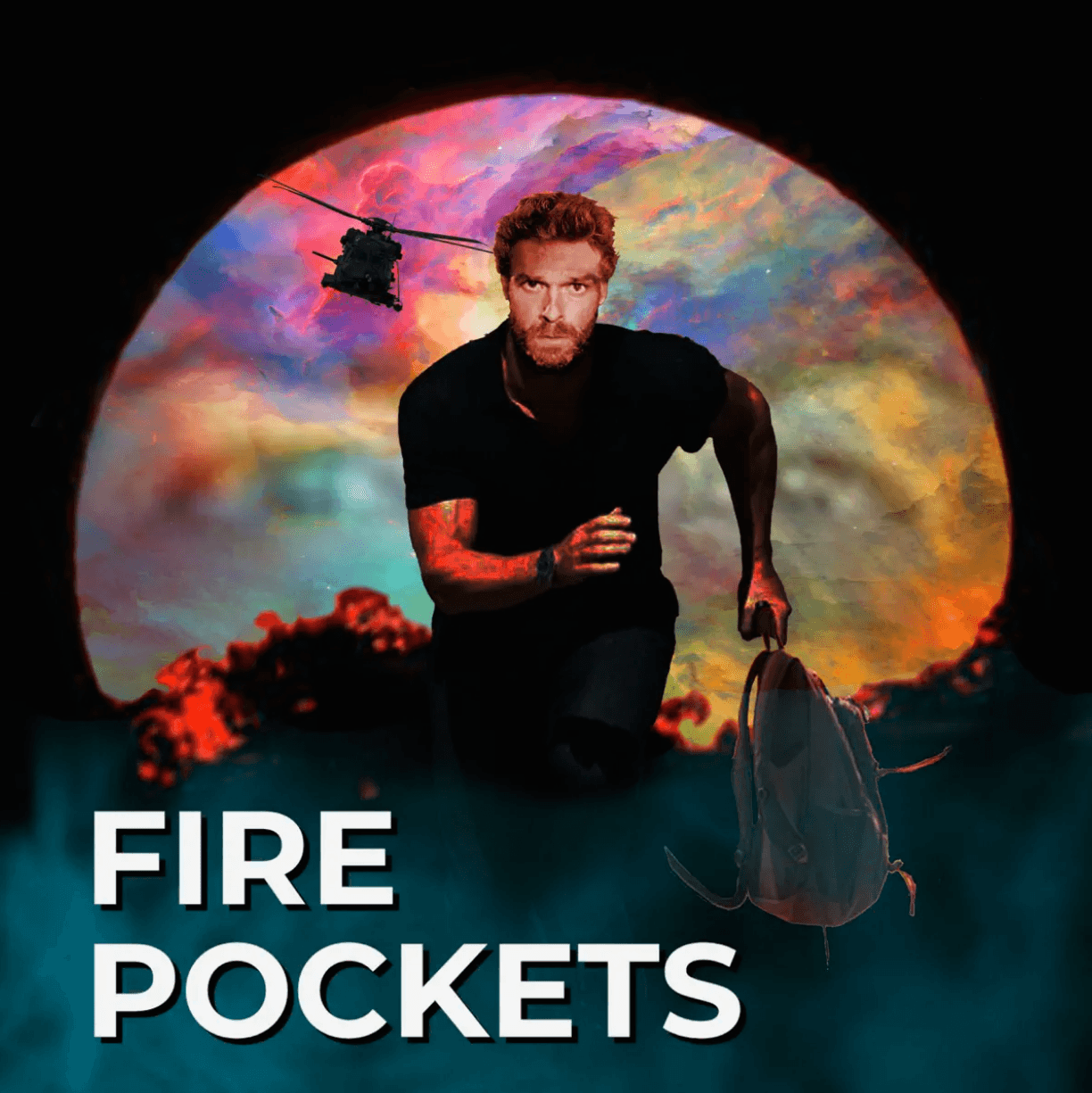Meet Michael Ryan Hahn | Filmmaker & Author


We had the good fortune of connecting with Michael Ryan Hahn and we’ve shared our conversation below.
Hi Michael Ryan, do you have a favorite quote or affirmation?
“Success is not final, failure is not fatal: it’s the courage to continue that counts.” Winston Churchill might have said that first, and he wasn’t talking about making movies, but where I first saw it was on a Tom Cruise meme, so whether he actually said it or not, I hear it in his inspiring voice and it is about making movies.
While there are cases where failure is in fact pretty fatal, the quote is meaningful for creative bravery. To never fear the bold step. To go for the different camera move, or the acting beat that takes a risk. To listen to the whispering instinct in the back of your mind that asks, “What if?” Because if you master your tools, you’re never really stuck, and you can lead your team through almost any problem. Like the great Chirstopher McQuarrie said, “If I created myself into this mess, I should be able to create my way out.”
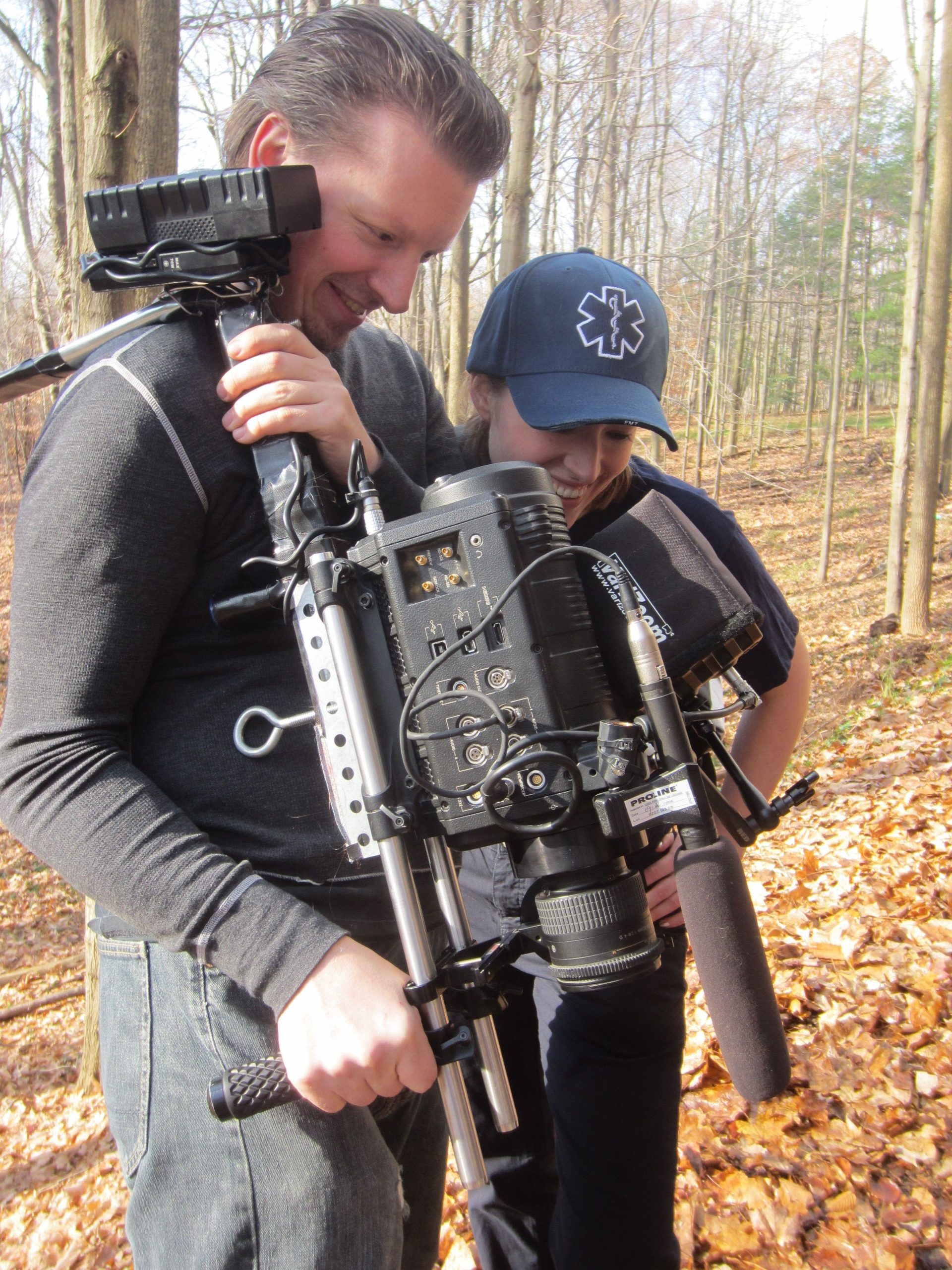

Let’s talk shop? Tell us more about your career, what can you share with our community?
I’m a filmmaker and, because of the pandemic, also a podcaster and author. And now I’m co-directing with my wife! It’s been an interesting road so far.
Elisabeth and I just directed a short film written by Oscar-winning writer David Rabinowitz. He’s a wonderfully talented guy. He liked our previous short film and accepted our invitation to work together, and that’s how WHISTLECATCHER came into being. It hasn’t been released yet, but will be in the coming months.
Before that, Elisabeth and I made projects like early Robert Rodriguez in the REBEL WITHOUT A CREW way. The feature we released just before the pandemic is a sci-fi comedy called ALIEN THEORY, about a man who doesn’t know what his job is. We shot it for $25K, in 40 locations across 3 states, with an ensemble cast and almost no crew (I taught my lead actor some cinematography and he helped light scenes before I shot them). We got all the locations for free (or nearly free). A lot of sets were built in living rooms. I’m sharing the behind-the-scenes adventures on X.
During the pandemic I wrote a comedy podcast called FIRE POCKETS to keep active with some of our friends while we couldn’t be together. Everyone recorded themselves on their cell phones from wherever they were in the world. We leaned into the old-school style of an Orson Wells radio play, but with a modern twist. I sound-designed the whole series in my home office with some foley and a cinematic sound effects library. The story is a mystery about an affable guy trying to reverse a strange apocalypse, learn what the Fire Pockets are, and make friends. But he’s really bad at these things—his own love interest wants to kill him, he’s not a great detective, and he’s insanely accident prone. As in he knocks down skyscrapers by mistake—technically not his fault, as he explains it.
But that only got us halfway through the pandemic. I turned my attention to writing books, which I’d never done before. I snuck up on the idea by adapting one of my screenplays into a novella called CHILDREN OF THE STORM, and I quickly realized that writing the book and then going back to the script was a fantastic way to improve the story. Then I started in on an adventure series called THE ANTHEM OF ASH & PISTOLS. The first book is PISTOL ROSE AND THE WEDDING THAT SPARKED A WAR, about a futuristic medieval world where marriage is illegal, but two families rebel against the tyranny and cause a war. It will be a 7- part series.
None of this would’ve been possible without going through the first feature I made, a trial by fire that I think back on as, “the resilience training.”
I directed my first movie, ENEMY EMPIRE, on a shoestring, funded by credit cards and the dollars I could set aside from my low-salary day job at the time. All our gear and costumes fit in the back of a Mini Cooper. I had this idea that we could have 4 or 5 actors play multiple characters and make the movie look like it had 20 people in it. It was a sci-fi story in which if a character’s eyes were exposed to sunlight, they would catch Sun Disease and thereafter only see their face on other people. We shot out in the desert (big, grand location!), and everyone was changing costumes/characters the whole time. There was no CGI, so we handled it like the hypnosis sequences in John Frankenheimer’s THE MANCHURIAN CANDIDATE, with clever editing and point-of-view shifts. I was very excited. But… due to the actors’ schedules, we had to shoot in the summer. The blazing hot summer to end all summers.
The good thing was it really looked like the apocalypse—there weren’t many dirt bikers out there in the heat leaving tire tracks in our world of zero vehicles. You could see miles in every direction and feel like you were alone on the planet. But the cheap Steadicam I spent two months’ income buying melted on the first day. Someone lost a very important bolt from the tripod and it fell apart. We couldn’t reschedule the actors, and all my vacation time for the year from my day job was locked in and I’d get fired if I tried to change it or came back to work even one minute late. So, I used a ladder instead of a tripod and did my best to make handheld not look handheld for the rest. We were fortunate to get to use a RED ONE camera, and it held up wonderfully in the heat and dust, but it sure got heavy as the days wore on. We knew the shoot would be hard, but it was so much harder than we anticipated. There was no way to shoot my ambitious storyboards with handheld as the only option. I had to throw the plan out and redesign every sequence in my mind just before shooting. Each morning, we scouted for the place we’d film the day’s work because it was so easy to get lost out there—you’d rarely be able to find the place you were yesterday. Some locations took a thirty-minute hike to get to. Everything was forced to be a certain level of spontaneous. But we were all very happy with how it looked, and the actors had an unforgettable time. Some lifelong friendships were made.
There was so much environmental pressure to quit, that we shouldn’t have walked out of that desert with a movie at all, but we safely did. And for a first film, I’m proud that we did it. I wouldn’t do it the same way today, but I’m glad I went through it because it was the right kind of hard. The shoot taught me how to think on the fly and constantly adapt. To hold the whole movie in my head and to manage continuity and the screen direction of actors playing multiple characters in the same scene without running into problems in the edit later. Most of all, the desert taught me to make decisions fast. I still storyboard, but whenever it’s necessary to change something on the day, be it for a sudden restraint or just because a better idea presents itself, it’s easy because of that impossible experience. For example, on ALIEN THEORY, at the last minute we had to move a big fight scene involving 6 characters from an open field into a claustrophobic house with tight rooms and hallways, and how we adjusted to that completely different environment makes it one of my favorite sequences in the movie.

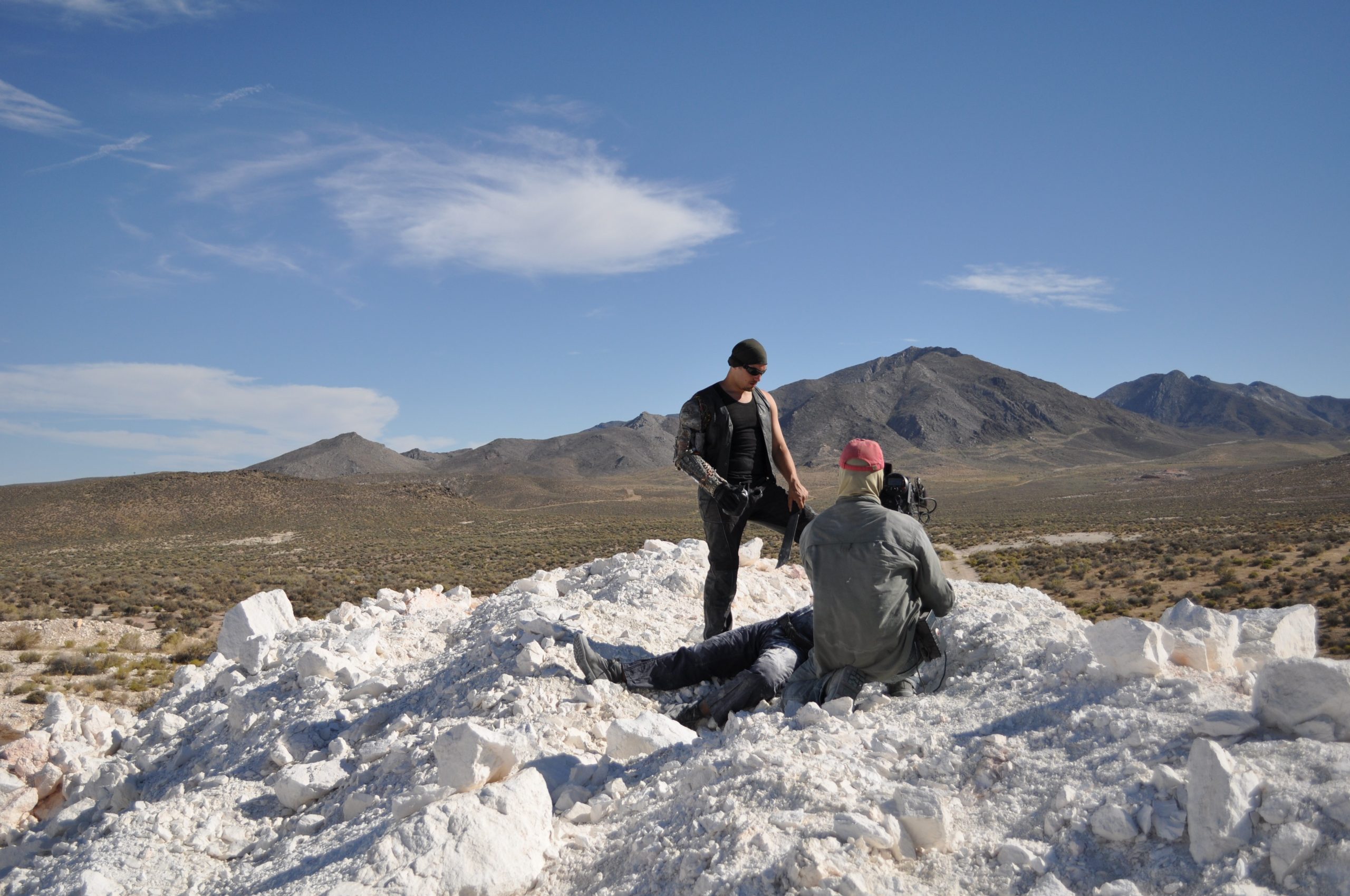
Let’s say your best friend was visiting the area and you wanted to show them the best time ever. Where would you take them? Give us a little itinerary – say it was a week long trip, where would you eat, drink, visit, hang out, etc.
This exact thing happened, and here’s what we did:
We took them to The Edison downtown when it was still open (I hope it reopens!) They had the best chocolate chip cookies, in a steampunk basement under a skyscraper, with a cabaret show. The next day we went to the beach, and Gold’s Gym in Venice. It’s an amazing place, and you might be surprised who you can bump into there. We also went to an AMC dine-in movie theater, which spoiled them with their reclining seats.
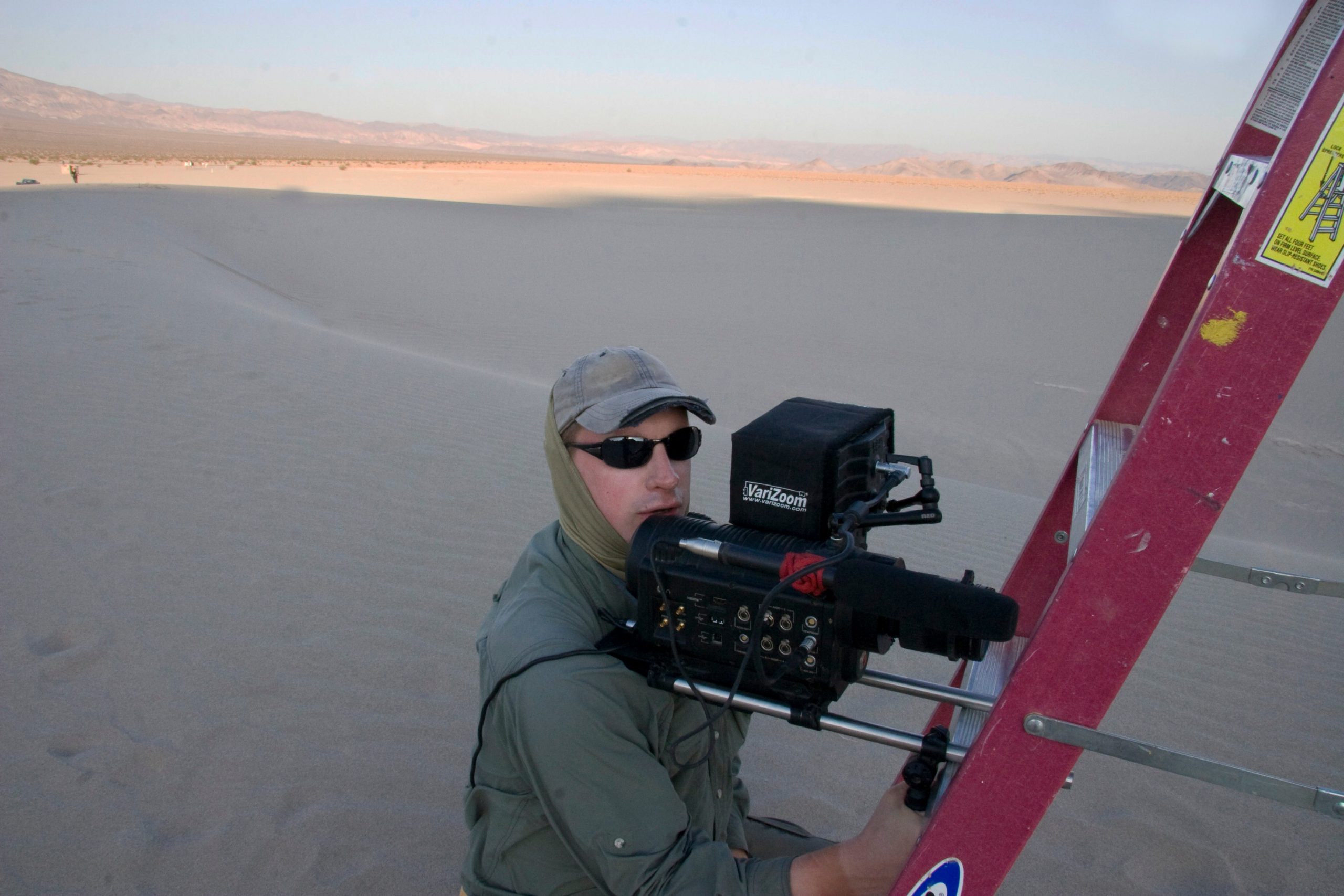
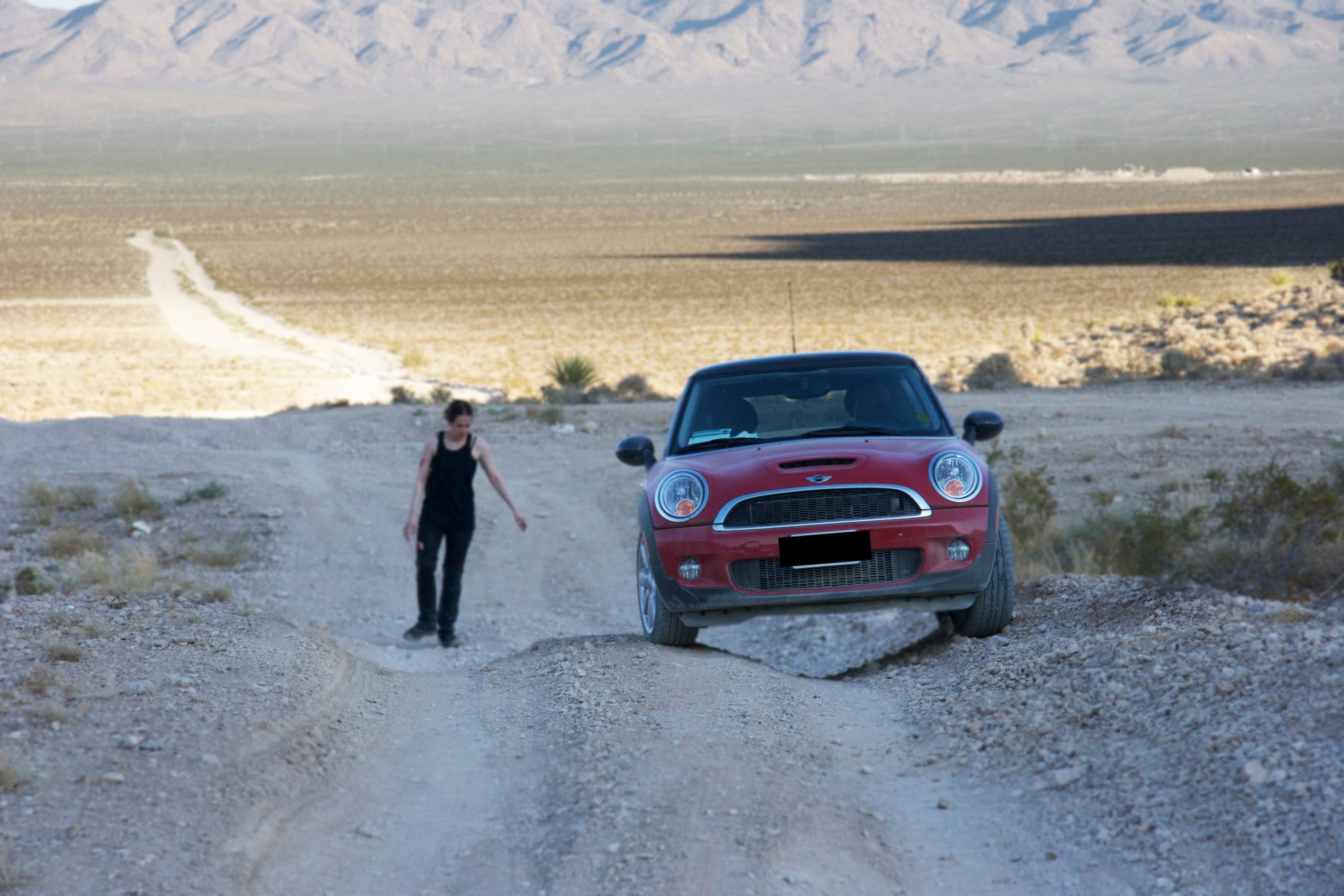
Who else deserves some credit and recognition?
I’d like to dedicate this Shoutout to a fantastic mentor I had for several years named Ken Rotcop. He taught a tiny screenwriting group in his house during his retirement, and being part of that was a special time for me. I sat on his couch and learned everything he had to share about writing, business, and people. He was brilliant and kind, with an old-timer’s wisdom and a young man’s smile.
Here’s a story he told me… Many years before I knew him, he was a studio executive at Hanna-Barbera. In his early days, a young director pitched him a project called Ace Eli & Roger of the Skies. The studio passed, but this young director liked Ken and asked if he could sit on his couch and watch him take meetings and phone calls and learn from him. Ken said sure. He told me this kid sat on his couch for three days, asking endless questions, soaking up business and Ken’s advice. A short time later, the young man went on to make DUEL, then JAWS, and you all know the rest. Ken touched a lot of lives over a span of many decades, from the biggest people to the smallest, with a gracious heart that was contagious. If you knew Ken, then you shared a special mentor with quite a group of people, and anything he gave you was worth holding onto.
Website: https://michaelryanhahn.com
Twitter: @michaelryanhahn

